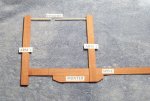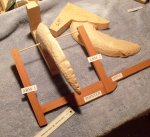This is for everyone that's carved a spoon and can remember their first attempts...
Can you tell me what difficulties or frustrations you had when you were carving your first spoons?
I've got hours of spoon carving video but I'd like to make a (or a few) basic help article/packages that will help people in their first steps into spoon carving.
If you can remember what you would have liked help with I'd love to know.
I imagine it's something like:
Wood selection
tool use
cutting with and against the grain (often when shaping that transition into the bowl from the handle)
shaving off too much wood
shaping the bowl
if you've got more specific things then let me know. I also think this will be a great thread for people starting out, especially if people share their experience of how they do things now etc.
Pics would be brill!
cheers
Can you tell me what difficulties or frustrations you had when you were carving your first spoons?
I've got hours of spoon carving video but I'd like to make a (or a few) basic help article/packages that will help people in their first steps into spoon carving.
If you can remember what you would have liked help with I'd love to know.
I imagine it's something like:
Wood selection
tool use
cutting with and against the grain (often when shaping that transition into the bowl from the handle)
shaving off too much wood
shaping the bowl
if you've got more specific things then let me know. I also think this will be a great thread for people starting out, especially if people share their experience of how they do things now etc.
Pics would be brill!
cheers



